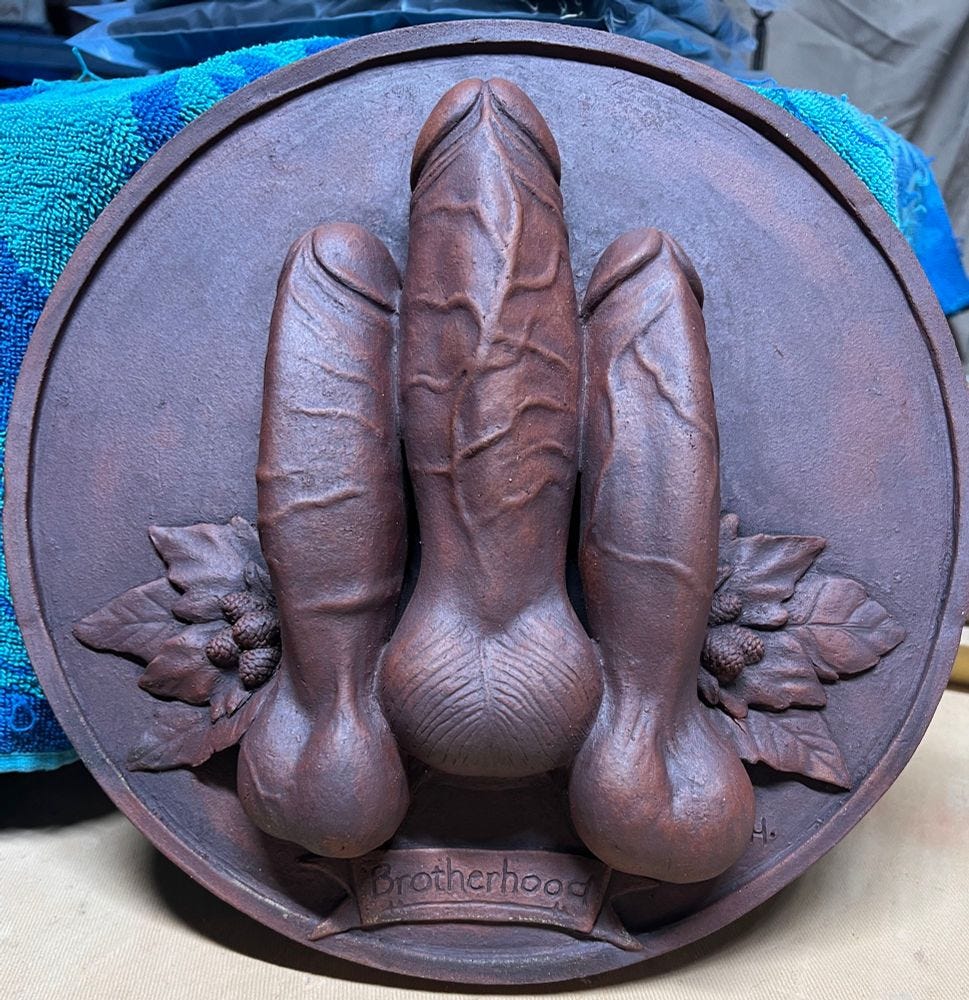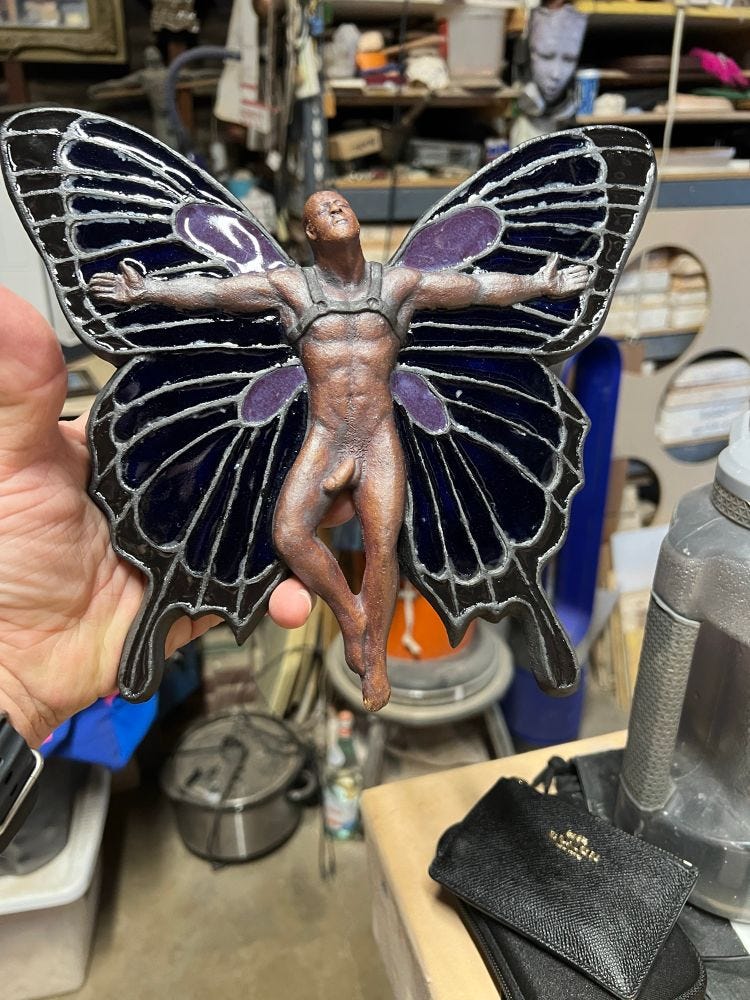Unkleharry. Phallus sculptor. Origin of the word "fascinate." Ithyphallic Hermes.
As if dug up by ancient Roman and Greek ruins his art is "fascinating."
Subscriptions are free.
The origin of the word “fascinating.”
The online sources have as the origin the idea of a witchcraft spell holding the attention of the viewer.
https://www.etymonline.com/word/fascinating
However, the Fascinus was an element of Roman religion. Basically it was to distract demons and evil spirits and halt them because they were fascinated. Fascinus was a Roman diety.
Phallic charms, often winged, were ubiquitous in Roman culture, appearing as objects of jewellery such as pendants and finger rings, relief carvings, lamps, and wind chimes (tintinnabula).[10][11][12] Fascinus was thought particularly to ward off evil from children, mainly boys, and from conquering generals (see n. 6). The protective function of the phallus is usually related to the virile and regenerative powers of an erect phallus, though in most cases the emotion, shame, or laughter created by obscenity is the power that diverts the evil eye.[13]
There are very few Roman images of people wearing a phallic charm.[13] Varro notes the custom of hanging a phallic charm on a baby's neck,[a] and examples have been found of phallus-bearing rings too small to be worn except by children.[14] A 2017 experimental archaeology project suggested that some types of phallic pendant were designed to remain pointing outwards, in the direction of travel of the wearer, in order to face towards any potential danger or bad luck and nullify it before it could affect the wearer.[15] Other symbols may have been interchangeable with the phallus, such as the club of Hercules.[13]
The victory of the phallus over the power of the evil eye may be represented by the phallus ejaculating towards a disembodied eye. This motif is shown in several examples of Roman art.[16] For example, the motif is known from multiple relief sculptures from Leptis Magna in present-day Libya,[11] as well as several instances on Hadrian's Wall.[17] A 1st-century BC terracotta figurine shows "two little phallus-men sawing an eyeball in half".[10][11]
The "fist and phallus" amulet was prevalent amongst soldiers. These are phallic pendants with a representation of a (usually) clenched fist at the bottom of the shaft, facing away from the glans. Several examples show the fist making the manus fica or "fig sign", a symbol of good luck.[14][18] The largest known collection comes from Camulodunum.[19] Some examples of the fist-and-phallus amulets incorporate vulvar imagery as well as an extra apotropaic device.[20]
https://en.wikipedia.org/wiki/Fascinus
There was the ithypallic Hermes, “ithy” is Greek for straight and “phallus” means penis. The God Hermes was portrayed with an erect penis. On items it was a protection.
https://en.wiktionary.org/wiki/ithyphallic
I could not find the ithyphallic Hermes in English language Wikipedia. I did find it in the German Wikipedia.
https://creativecommons.org/licenses/by-sa/3.0/
https://no.wikipedia.org/wiki/Herme_(skulptur)
With the coming of the Christians everything sexual was evil and the customes of the ancients regarding the phallus vanished. Later “fascinus” became a word used for witchcraft spells.
Though we think that this art is outlandish, it was common among the Romans and Greeks.
So Unkleharry reviews an art form from ancient times.
Unkleharry’s online presence.
https://bsky.app/profile/unkleharry.bsky.social
https://harrytanner.com/TILES/
His art
I am going to have a section on his art tiles at the end.
The winged phallus is a common image from ancient Roman civilization.
Click on image to go to his post.
Click on image to go to the post. These are smoking pipes.
Before glazing. Click on image to go to the post.
Click on the image to go to the post.
These phalli has wings on either side.
https://harrytanner.com/TILES/













Fascinating! This reminds me we have our own temple sculpture too. 🎉